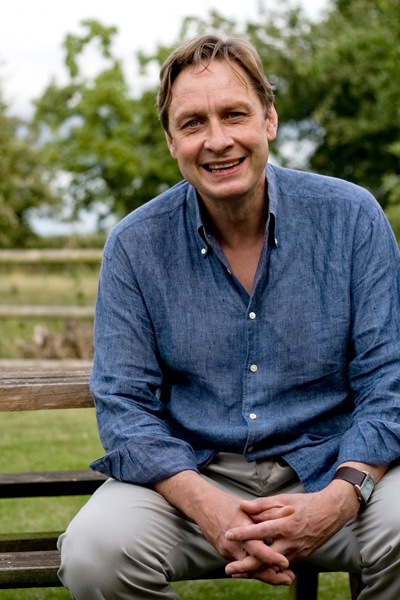Beethoven’s first musical sketches for Schiller’s Ode ‘To Joy’ (An die Freude) date as early as 1793. But it was only in his last decade that he began work on the symphony that would culminate in its huge choral setting.
By then the world had changed immeasurably. After Napoleon’s final defeat in 1815 the repressive old order was re-imposed with vengeance.
As Beethoven finished his Ninth Symphony in 1824, the democratic utopia prophesied in Schiller’s Ode must have seemed further away than ever.
One may hear a note of defiance, even desperation, in Beethoven’s setting – of hope in the teeth of tragedy. Yet the music’s impassioned urgency, and the audacious brilliance with which the Ode emerges from the orchestral narrative of the first three movements, does, in a good performance, give the words uncanny force.
We cited the Ninth Symphony in our list of best works by Beethoven, and it's also one of the greatest symphonies of all time. Incidentally, you can hear this masterful work at the 2024 BBC Proms, where it will be performed from memory by the remarkable Aurora Orchestra for Prom 42, which takes place on Wednesday 21 August.
The best recording of Beethoven Ninth Symphony
Otto Klemperer A Nordmo-Løvberg, C Ludwig, W Kmentt, H Hotter; Philharmonia (1957) Testament SBT 1177
Measured by the clock, the first two movements are on the slow side. Yet Otto Klemperer’s energy and momentum come not from his tempos but from the way the rhythms are articulated.
This is more striking in this live recording than in the studio version he made the same year. In the first movement and Scherzo the heroic, teeth-gritted determination are physically gripping.
The Scherzo drives on through all the repeats and the timpani-enhanced climax is magnificent, the tragic elements in this movement well understood.
In the Adagio Klemperer reveals how much humanity there was behind his crusty exterior, at the same time making the music sing at a tempo quite close to Beethoven’s seemingly fast metronome marking.
In the finale Klemperer leads majestically through reminiscences of former movements and orchestral variations on the famous ‘Ode to Joy’ theme to the arrival of the voices, providing the version that stirs thoughts and feelings most acutely for me.
After the Second World War many musicians felt that the message that ‘All mankind should be brothers’ needed affirmation more than ever – few more so than the German Jew Otto Klemperer.
In this Ninth he combined urgency with masterly control and spellbinding authority, and a dignity all his own.
Three more great recordings of Beethoven Ninth Symphony
Claudio Abbado J Eaglen, W Meier, B Heppner, B Terfel; Berlin Phil (1996) Sony 516 2302
Claudio Abbado’s beautifully recorded concert performance from the Salzburg Festspielhaus 1996 is my clear first choice among modern versions. It’s not always the most blazing Beethoven Ninth, but it is a gripping, steadily unfolding, intensely human drama. The Scherzo’s warmly expressive central trio section grows into a radiant anticipation of the finale.
The orchestra’s imploring but dignified responses to the slow movement’s fanfare climax strongly recall the prayer ‘grant us peace’ from the contemporary Missa solemnis.
Then, towards the end of the finale Abbado offers something fresh: the final slow quartet is revealed as the symphony’s true goal – a moment of calm visionary beauty, whose memory lingers long after the great ecstatic rush forward at the end.
We named Claudio Abbado one of the greatest conductors ever
Wilhelm Furtwängler E Schwarzkopf, E Hongen, H Hopf, O Edelman; Bayreuth Festival Orch (1951) Naxos 8.111060
Wilhelm Furtwängler’s 1951 recording from the reopening of the Bayreuth Festival takes several minutes to reach full dramatic impetus, but after that it never flags for a moment.
In contrast to Klemperer, it’s not so much rhythms that drive the music as Furtwängler’s profound sense of the structure as a huge, supple melodic line.
It sustains right through the Scherzo. Then in the slow movement Furtwängler follows the old Lutheran proverb ‘sin wholeheartedly’, ignoring the metronome mark and opting for a ripe post-Wagnerian Adagio molto.
Miraculously it works, and the movement emerges as a single outpouring of impassioned song. The choir sounds recessed in the finale, yet the pathos in the contrasts between doubt and strenuous reaffirmation cuts through technical imperfections.
Arturo Toscanini E Farrell, N Merriman, J Peerce, N Scott; NBC Symphony Orchestra (1952) RCA GD60256
Toscanini’s pace in the first movement is electrifying, and somehow he even manages to shift up a gear in the final crescendo. Still more remarkable is the way the energy spills over into elemental dance of the Scherzo.
The slow movement is warmly expressive but always purposeful, and when we get to the finale we realise what that purpose is. As the chorus enters there’s a feeling of a crowd pressing forward eagerly, answering the call to ‘Joy’ – implying, if not directly stating, ‘Freedom’.
Toscanini draws the elements of the story together superbly: first the hushed chorus then the soloists seem to reach for something higher, better, glimpsed for just a moment before the final exhilarating surge.
Read more of our reviews of the latest Beethoven recordings here
Find out more about Beethoven and his work here
Original text by Stephen Johnson
